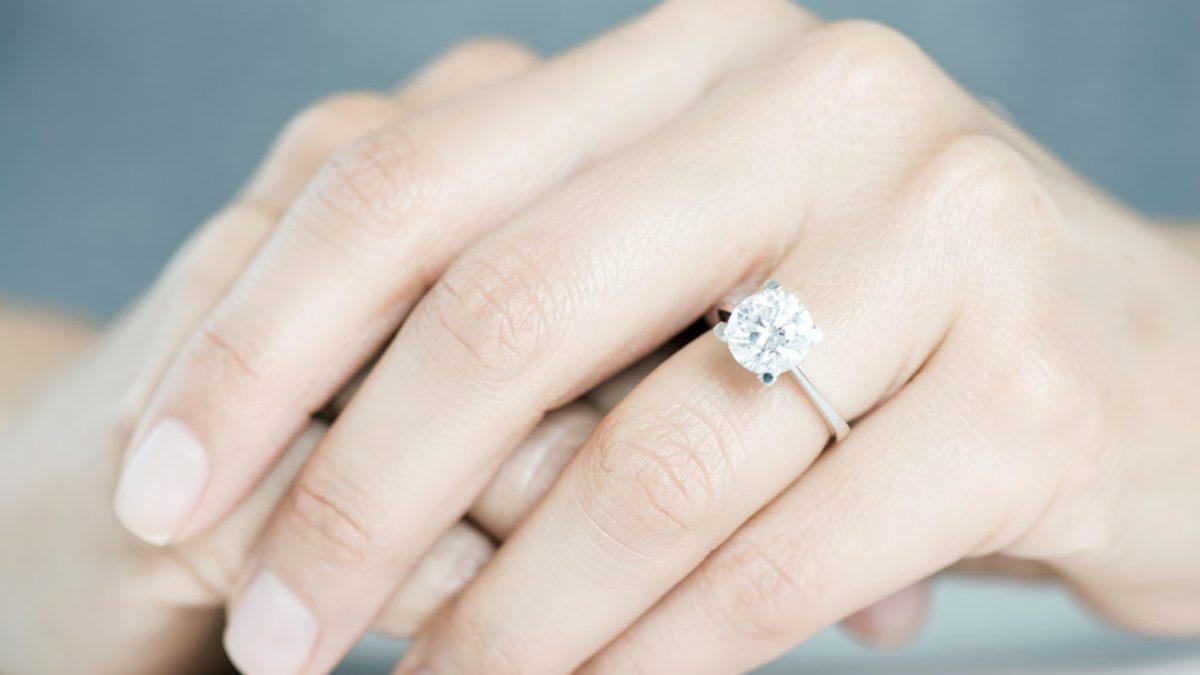Introduction: The Ring, the Risk, and the Reality
The engagement ring—a symbol of love, commitment, and a future together. For many couples, it’s not just a romantic gesture; it’s a substantial financial investment. In 2025, the average cost of an engagement ring in the U.S. is around $7,800, with luxury pieces exceeding $20,000. Yet, while couples plan for weddings and honeymoons, few think to insure the ring before things take an unexpected turn.
Unfortunately, not all engagements lead to “I do.” Statistics show that 20–30% of engagements are called off before the wedding day. Whether it’s a mutual decision or a sudden breakup, this raises serious questions:
-
Who keeps the ring?
-
Is it covered by insurance?
-
What happens if the ring is lost, damaged, or stolen before the wedding?

This article explores the practical, legal, and emotional reasons why insuring the engagement ring before the engagement ends isn’t just wise—it’s essential. We’ll unpack:
-
The risks to your ring (and your wallet)
-
The legal status of engagement rings in breakups
-
The best ways to insure your ring
-
What typical ring insurance covers (and what it doesn’t)
-
Real-life scenarios and expert advice
Chapter 1: Why Engagement Rings Need Protection
1.1 A Small Item, a Big Target
Engagement rings are high-value, high-risk items. Whether it’s a $2,000 band or a $25,000 custom diamond, they’re vulnerable to:
-
Loss (accidental misplacement, left behind at a hotel or gym)
-
Theft (home burglary, snatching, travel risks)
-
Damage (chipping, stone loss, scratches, water exposure)
-
Mysterious disappearance (when it vanishes without clear proof)
Unlike your TV or couch, your ring is worn daily and exposed to public environments—making it far more likely to be lost or damaged.
1.2 Engagements Don’t Always End in Marriage
Life happens. Breakups are common. In some cases:
-
The ring gets returned
-
The recipient refuses to give it back
-
The giver doesn’t want it back
-
The ring disappears or is “accidentally” lost

Without insurance, both parties risk losing the investment entirely.
Chapter 2: Legal Ownership — Who Owns the Ring If the Engagement Ends?
Laws about engagement ring ownership vary by jurisdiction, but here are common scenarios:
2.1 Conditional Gift Rule
In many U.S. states, an engagement ring is considered a conditional gift—meaning it was given in expectation of marriage. If the engagement is broken:
-
The giver can legally ask for the ring back
But this can depend on who broke off the engagement. Some courts see the ring as forfeited if the giver ended the relationship.
2.2 Unconditional Gift Rule
Other jurisdictions may see the ring as a gift once it’s handed over. That means:
-
The recipient has full ownership
-
The giver can’t demand it back after a breakup
2.3 Fault-Based Rule
A few states base ownership on fault:
-
If the recipient broke off the engagement without just cause, they must return the ring
-
If the giver is at fault (cheating, abuse), they forfeit the ring
Important: Even if you own the ring, you may not be protected against financial loss unless you’ve insured it.
Chapter 3: What Ring Insurance Covers (and What It Doesn’t)
Engagement ring insurance can be purchased in several ways:
-
As a rider on a homeowners or renters policy
-
As a standalone jewelry policy through companies like Jewelers Mutual, BriteCo, or Lavalier
-
As part of luxury insurance packages
3.1 What’s Typically Covered:
-
Theft (from your home, luggage, or car)
-
Accidental loss (misplaced, dropped in a drain)
-
Damage (chipped stone, bent prongs, scratched metal)
-
Disappearance (can’t prove theft or loss, but it’s gone)
-
Worldwide coverage while traveling
-
Some even include cost-free repairs or replacement
3.2 What’s Not Covered:
-
Intentional damage
-
Wear and tear (e.g., dulling, minor scratches over time)
-
Mysterious disappearance with fraud indicators
-
Engagement disputes (breakups, legal battles over ownership)
If the ring gets destroyed in a fit of rage or “goes missing” during a breakup, the insurer may investigate heavily or even deny the claim.
Chapter 4: How to Insure an Engagement Ring
Step 1: Get a Professional Appraisal
You’ll need a certified appraisal or detailed sales receipt. This should include:
-
Carat size and cut
-
Clarity and color
-
Metal type
-
Brand/designer
-
Purchase price and market value
Update the appraisal every 2–3 years to reflect market changes.
Step 2: Choose Your Insurance Path
Option 1: Homeowners or Renters Policy Rider
Pros:
-
Cost-effective (as low as $30–$100/year)
-
Bundled with your existing policy
Cons:
-
May have limits ($1,000–$2,500 per item)
-
Might not cover loss outside the home
-
Filing a claim can increase home insurance premiums
Option 2: Standalone Jewelry Policy
Pros:
-
Full-value coverage
-
No impact on home insurance
-
Custom features (travel, maintenance, disappearance)
Cons:
-
Separate premiums
-
May require annual appraisal updates
Top providers in 2025:
-
Jewelers Mutual: Trusted, long-standing insurer
-
BriteCo: Offers up to 125% replacement value
-
Lavalier: Easy app-based signup and claim filing
-
Zillion: Instant quotes, integrates with jewelry stores
Step 3: Choose Your Deductible
Most policies offer flexible deductibles ranging from $0 to $1,000. A higher deductible lowers the premium but increases out-of-pocket costs if you file a claim.
Chapter 5: Cost of Ring Insurance — Worth It?
On average, ring insurance costs 1–2% of the ring’s appraised value annually.
Example:
-
$5,000 ring → $50–$100/year
-
$15,000 ring → $150–$300/year
Compare that to:
-
Replacing a ring without insurance: $5,000–$15,000+
-
Suing an ex over the ring: thousands in legal fees
-
Emotional cost: irreplaceable in some cases
Peace of mind often outweighs the small annual cost.
Chapter 6: Real Stories — What Can Go Wrong
Story 1: The Stolen Ring Before the Wedding
Maya was engaged for 3 months when her apartment was robbed. Her uninsured $9,000 ring was taken along with other valuables. She and her fiancé hadn’t considered ring insurance, and the loss added stress and tension to their wedding planning. They couldn’t afford a replacement and had to settle for a less expensive alternative.
Story 2: The Engagement Breakup & Dispute
Jon proposed with a $12,000 heirloom ring. Three months later, the couple broke up. His ex refused to return the ring. The family was devastated, and Jon spent months in small claims court trying to retrieve it. Had it been insured, at least the financial value would have been protected.
Story 3: The Lost Ring on Vacation
Sarah took her engagement ring off at a resort spa in Bali. It was never seen again. Fortunately, her standalone policy covered full replacement costs, including rush custom work and international shipping.
Chapter 7: Special Considerations in 2025
7.1 Tech-Enhanced Rings
With smart rings gaining popularity—rings that track health metrics, sync with devices, or display virtual light shows—insurance becomes even more important. These tech-infused bands are:
-
More expensive
-
Easier to damage
-
Harder to replace
Make sure your insurer understands the full value, including tech components.
7.2 Crypto and NFT-Based Rings
Some couples now purchase digital engagement tokens or NFT jewelry as a gesture or investment. These should be insured separately under digital asset insurance or as part of cyber protection plans.
7.3 Alternative and Ethical Gemstones
Ethical lab-grown diamonds, sapphires, and moissanite may require special appraisal categories. Ensure your insurer recognizes non-traditional or vintage ring values accurately.
Chapter 8: What Happens After the Engagement Ends?
So, the engagement ends. What happens to the ring—and the insurance?
If the Ring Is Returned:
-
The giver (owner) can maintain or cancel the policy
-
The ring can be repurposed, resold, or stored
-
Some insurers offer “emotional transition” coverage—free resizing, resetting, or repurposing
If the Ring Is Not Returned:
-
A claim can’t be made for “emotional theft”
-
Some insurers allow you to transfer ownership coverage
-
Legal action may be your only option (and is rarely worth it)
If the Ring Is Lost During the Breakup:
-
Most policies cover accidental loss
-
However, suspicious circumstances may void the claim
-
Always document what happened and file police reports if needed
Conclusion: Love May Be Unpredictable, but Protection Isn’t
An engagement ring is more than just a romantic token—it’s a valuable, meaningful investment. And while no one plans for their engagement to end early, protecting that investment with insurance is one of the smartest, most practical decisions a couple can make.
Insuring the ring isn’t pessimistic—it’s responsible. It says:
-
“I value what this represents.”
-
“I want to protect what we’re building.”
-
“If life doesn’t go as planned, we’ll have fewer regrets.”
So whether you’ve just proposed, are shopping for a ring, or recently got engaged, take this step seriously. Because in matters of the heart—and your wallet—hope for the best, but insure for the rest.
